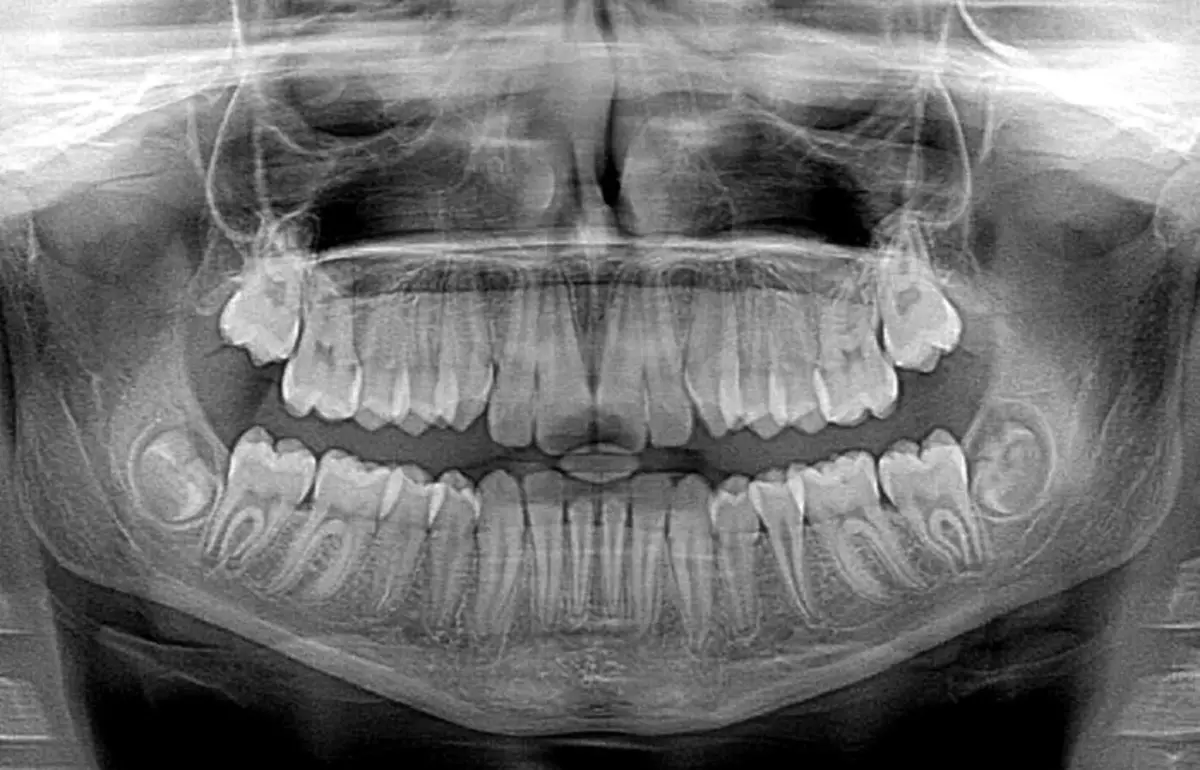Does man need so-called wisdom teeth, originally solves nature. Interesting the fact that according to the testimony of anthropologists, only 10 thousand years ago, everyone had "eights". Now, this "gift of nature" gradually turns into rudiment - the teeth of wisdom grow only in half of the population. Moreover: 15% of people are not even laid in the fighter "eights"! How important is the "teeth of wisdom", what function they do, should they save them or better remove?
The first question on this topic, which is most often interested in patients - is it necessary to leave eights? In what cases it is better to save these teeth, and in what - to get rid of them?
In some Western countries, such a procedure is included in medical insurance, this issue is not even discussed. In Russia, it is decided to proceed from the specific situation of the patient. Yes, the "eights" almost do not participate in the chewing of food (in fact - the direct duty of the teeth is not fulfilled by them), yes, they are more difficult to clean than all the other teeth (and even more difficult to treat). However, it is worth remembering that these teeth can be performed if necessary. A number of functions:
- They take some chewing load at the loss of other teeth (relevant most often for the elderly);
- "Eight" are a kind of support for the rest of the teeth, do not allow the distance between them;
- The teeth of wisdom can be useful in the case of the installation of the "Bridge".
Leave the "eight" is advisable when:
- They are healthy and do not deliver discomfort;
- these teeth have a fully cut formed crown;
- They are correctly located and are available for hygienic manipulations.
The combination of the above items is quite rare. Most often, the presence of "eights" is associated with problems that are readings for removal . These include:
- the need to install braces - in this case, the teeth of wisdom will interfere and therefore are removed;
- the presence of caries - we are talking about the launched form of caries together with the complex arrangement of the tooth, which makes it difficult for treatment;
- the tooth grows incorrectly (under the tilt) and thereby injures the gum or cheek;
- for the tooth there is not enough place (in this case, the "eight" can shift the neighbors, contributing to the formation of incorrect bite);
- The tooth of wisdom did not fully cut through - between the gum and the crown of the tooth as a result of this, the space in which the pericoronite may develop due to the accumulation of bacteria and food particles.

Wisdom teeth grow only in half of the population
Photo: pixabay.com/ru.
In what cases is it worth treating "eights"?
A definite answer to this question can give a dentist, relying on the analysis of the state of the tooth of the wisdom and the state of the patient's teeth as a whole. One of the testimony for the treatment of "Eights" can be the deplorable state of "seven" and "six" (then, in the case of their loss, the "eight" will take on the role of support during the bridge prosthetics).
The presence of shallow caries on the "eight" is also not a reason for it to immediately get rid of, especially when it comes to a properly located tooth. Compeated treatment will help keep the tooth for many years, and perhaps for life (after all, it can always be time to remove the tooth). The good condition of the tooth-antagonist (antagonist - tooth-pair on the upper or lower jaw) is also an indication to treat and save the "eight". Choose the treatment of caries "eight" in counterweight removal is at least because the patient will avoid this path of the complex procedure, after which the healing period follows (sometimes quite long).
Is it worth treating the channels in the 8th teeth?
The question also requires a professional point of view that is fully based on a specific state of the teeth in each case. The possibilities of modern dentists are so wide that even the "eights", deeply affected by caries, can be saved with properly and well-done treatment. Treatment of channels in the teeth of wisdom is quite possible, if there are indications for preserving the teeth.
If the "eight" still is worth removing ...
With the right tooth, it takes his removal in the usual way: the gum is anesthetically anesthetic, the doctor gently loosens the tooth and removes it from the well. The well is processed by an antiseptic. In some cases, the seams are superimposed (in order to avoid bleeding and enhancing infection). Complicated removal is most often preceded by an X-ray shot, which will help the doctor to plan the removal process. The complexity for the dentist can be a tooth deep into the bone. In this case, the doctor cuts the perception of the flap, after which the bone tissue is removed over the tooth. The next stage of the operation is to remove the tooth of wisdom (immediately or in parts). At the end of the operation, seams are superimposed.
Reted teeth wisdom
In addition to the wrong location, the "eights" may have such problems as the inability to cut through the gums, or bone. Removal of retinated teeth refers to complicated, because in addition to conventional manipulations, the doctor needs to carry out additional manipulations before the removal of the tooth itself. The mucous fabric over the "hidden" tooth is cut in the gum, the bone is drilled until the ability to remove the tooth. Tooth is loosened and extracted (sometimes in parts).
